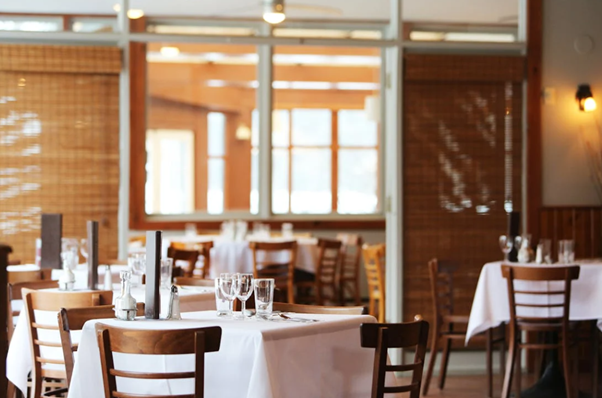Trends in Australia for Food and Hospitality Industry for 2025

With the increasing impact of trends in consumer behaviour, the way Australians eat and order food is changing rapidly. In the past couple of years, technological innovations like AI integration in commercial kitchens and drone delivery have painted a vivid picture of where the food and hospitality industry is heading.
In the first few months of 2025, we’ve seen developments in innovation and sustainability, and changes in consumer preferences. And this is just the beginning. The adoption of eco-friendly practices, AI-driven kitchens, and personalised dining experiences aren’t just passing trends; they’re setting a new standard in the food service industry that will benefit both consumers and businesses.
In this blog, we’ll walk you through some of the major trends of 2025 in the Australian food and hospitality sectors that you can leverage.
1. Sustainability & Ethical Dining
With the growing demand for green practices, sustainability is no longer an option; it’s an expectation. Businesses failing to adopt sustainable and eco-friendly practices are facing backlash from conscious consumers, leading to long-term brand damage or even closures.
Restaurants and catering businesses are replacing single-use plastics with biodegradable and compostable packaging options. The environmental impact of cradle-to-grave systems has given rise to circular economy initiatives, such as reusable takeaway containers and metal straws.
To lessen the carbon footprint caused by continuous import, local sourcing of ingredients from Australian farmers is on the rise. We can expect to see more farm-to-table menu items and a greater focus on locally grown seasonal produce in 2025.
2. Technological Innovation
Technology is reshaping the food and hospitality trends, making operations smoother, customer experiences more seamless, and kitchen activities more efficient.
In 2025, restaurants and hotels are leveraging virtual assistants and chatbots to enhance customer interaction. This technology is being used for table bookings, communicating dietary preferences and even for room service.
Contactless payments and digital menus are also on trend these days and are expected to stay. QR codes, mobile payments, digital menus and self-service kiosks are now commonly used for contactless interactions in food service businesses.
Smart kitchens equipped with IoT-connected devices, AI-powered cooking systems and cloud-based kitchen management platforms are rising on trend due to their contribution to efficient kitchen operation and enhanced food safety.
3. Cloud Kitchens & Delivery-First Models
The trend of online food ordering that took flight during COVID-19 is still relevant in 2025, with an increased number of cloud kitchens and advanced technological innovations in food delivery systems.
Also known as a ghost kitchen or virtual kitchen, the delivery-only setup of a cloud kitchen allows businesses to serve their customers without the need for a physical dine-in space. By hopping on this trend, food service businesses can leverage lower overhead and rental costs, test new concepts and enter into a new market with minimal risk.
Food delivery systems go hand-in-hand with cloud kitchen operations. Third-party delivery services such as Uber Eats, DoorDash, and Menulog are the dominant forces in the trend of online ordering. Moreover, technological integration in food delivery has given rise to drone delivery as a fast and contactless solution.
4. Fusion Cuisine
Australia’s multicultural culinary landscape is becoming even more diverse in 2025 with a new wave of fusion cuisine, blending old and new food traditions and recipes from different places around the world.
These days, chefs are experimenting with bold flavour combinations, pairing unexpected cuisines like Korean-Mexican. Korean tacos, for instance, combine Korean grilled meat like Bulgogi wrapped in Mexican tortillas and shredded cheese and garnished with salsa. The opportunity for innovation like these is endless.
This bold approach, however, may not be for everyone, so balance is the key here. While experimenting with fusion cuisine, it’s best to continue the staple signature menu items to satisfy customers who crave familiarity and comfort.
Read more: Cheese Trends Being Seen Throughout The Food Industry
5. Premium & Artisanal Beverages
As more Australians now favour natural, locally made drinks than ever, the food and hospitality industry is witnessing an exhilarating change in the beverage sector.
Craft coffee and specialty teas are becoming increasingly popular. Drinks like house-roasted coffee, matcha latte, cold drip, and organic herbal tea blends are crowd favourites now. It’s best for food and hospitality businesses to incorporate these drinks into their menus to stay relevant in the trend.
The current trend of people making healthy lifestyle choices has also resulted in increased consumption of drinks that are alcohol-free or are low in alcohol. Those who consume alcohol are becoming more conscious of what they drink, increasing the demand for artisanal beer and limited-edition brews in 2025.
Adapting to the Trends of Food and Hospitality
The year 2025 is a prime time for the food and hospitality industry. Employing the above-mentioned technology and trends presents unlimited opportunities to increase profits with less environmental impact. Success in today’s competitive market depends on how businesses utilise these trends to meet the needs of their customers, staff and operational infrastructure.
Among the trends that come and go, technological advancements like Artificial Intelligence have taken centre stage in 2025. With recent models of AI that are capable of more human-like interactions, businesses can save time, improve accuracy and offer a personalised customer experience.
With technology taking over the food and hospitality industry, businesses must ensure the security and reliability of their digital platforms. Some ways to remain secure involve regular software updates, encrypted payment gateways, and multi-factor authentication systems.
Apart from technological innovations, it’s equally important to stay relevant to current food trends by stepping into fusion cuisine, healthy meals and artisanal drinks.